![]()
Aroids and other genera in the Collection
Take the Tour Now?
Orchids
The
Exotic Rainforest
Plants in
the Exotic Rainforest Collection
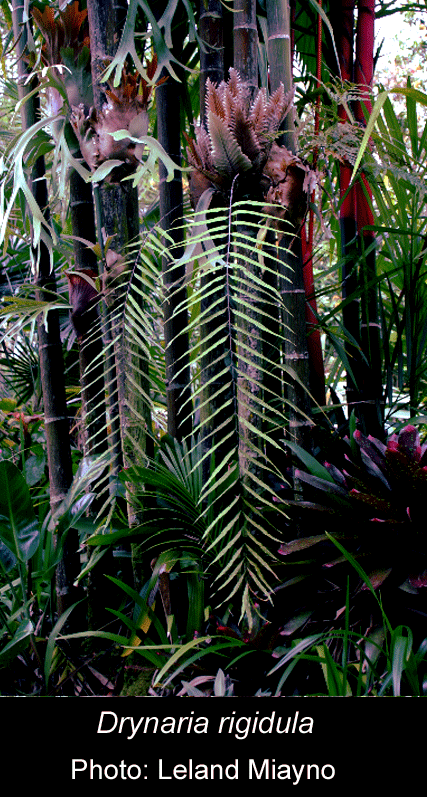
Synonyms: Drynaria baudouini E. Fourn., Drynaria diversifolia (R. Br.), J. Sm.,Drynaria gaudichaudii (Bory) Gaudich.
Drynaria pinnata Fée, Drynaria rigidula var. kosii Alderw., Goniophlebium rigidulum (Sw.) T. Moore,
Phymatodes gaudichaudii (Bory) C. Presl, Polypodium baudouini (E. Fourn.) Baker, Polypodium diversifolium R. Br..
Polypodium gaudichaudii Bory, Polypodium glaucistipes Wall., Polypodium rigidulum Sw.,
Polypodium rigidulum var. vidgeni, F.M. Bailey, Polypodium speciosum Blume
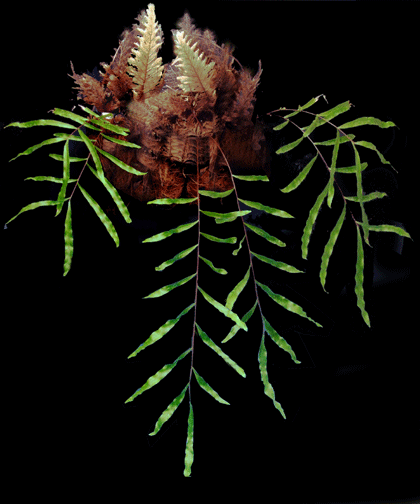 Described to science
by Richard Henry Beddome
in 1869
in Ferns of British India, Drynaria rigidula is considered very rare
fern by some
collectors. Found in the larger family Polypodiaceae, within some scientific literature as well as in Australia some don't consider
the species rare at
all.
Described to science
by Richard Henry Beddome
in 1869
in Ferns of British India, Drynaria rigidula is considered very rare
fern by some
collectors. Found in the larger family Polypodiaceae, within some scientific literature as well as in Australia some don't consider
the species rare at
all.
Drynaria
rigidula is known by a
total of 14 scientific synonyms (same species, different name)
but the
accepted scientific name is Drynaria rigidula. D. rigidula
is native to Australia, New Caledonia,
and possibly the island of Papau New Guinea but some sources indicate it is also found in
China and SE Asia. That information cannot be verified on botanical
sources.
Considered an
endangered fern in portions of its native habitat, Drynaria rigidula
is commonly known in Australia as the Basket Fern and grows in a large
clump. The species has been observed by
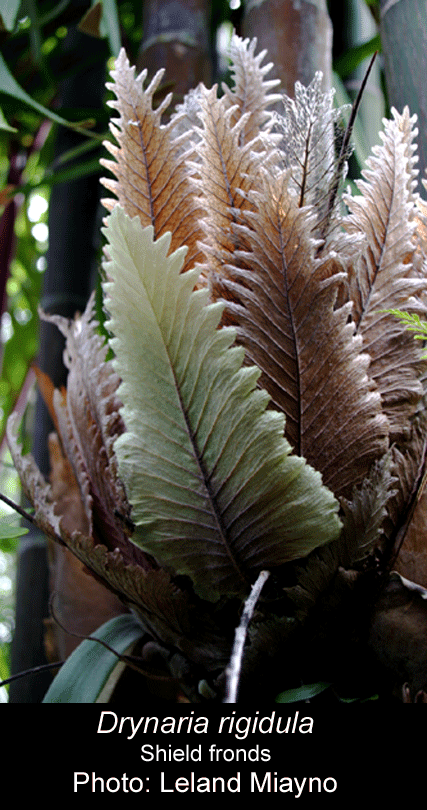 botanical scientists
as an epiphyte (ep-a-FIT) growing on trees, growing terrestrially in soil, and as an epilithic
(ep-a-LITH-ic) form
growing on stone.
botanical scientists
as an epiphyte (ep-a-FIT) growing on trees, growing terrestrially in soil, and as an epilithic
(ep-a-LITH-ic) form
growing on stone.
Unusual in its growth form, Drynaria rigidula has two very different types of fronds. The shield fronds are brownish red and are also known as ‘nest’ fronds. These fronds are short and feel something like paper. The sometimes erect green fronds may be up to 1.8 meters (6 feet) in length and are segmented into many "blunt-toothed" leaflets on short stalks.
Round packets of the plant's spores (sori) form in two rows on the back sides of the leaflets and create a bulge on the front. Sori form in regular rows on either side of Drynaria rigidula's mid vein. The mid vein is the center support of each frond. The green fronds are often completely lost during periods of dryness.
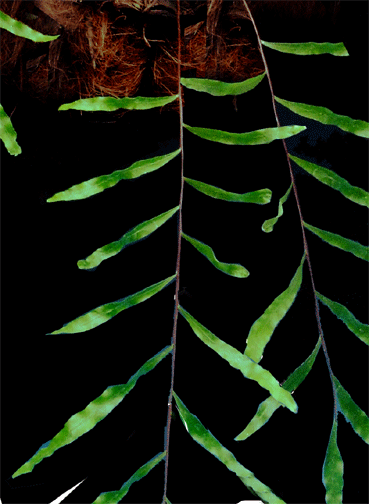 Drynaria
rigidula was once considered completely extinct in New South
Wales, Australia but has since been rediscovered and many now
consider it common. A member of the Polypodiaceae
family, Drynaria rigidula is primarily found in rain forests.
Technically the fern is a rhizome which is densely covered with long,
reddish brown ciliate (hairy) scales. The shield fronds are sterile
while the green fertile fronds are pinnate (feathery).
Drynaria
rigidula was once considered completely extinct in New South
Wales, Australia but has since been rediscovered and many now
consider it common. A member of the Polypodiaceae
family, Drynaria rigidula is primarily found in rain forests.
Technically the fern is a rhizome which is densely covered with long,
reddish brown ciliate (hairy) scales. The shield fronds are sterile
while the green fertile fronds are pinnate (feathery).
Some sources indicate the species is now found in only 3 locations in New South Wales although it is still relatively common in Queensland where it is widely found in the eastern portion of the territory. Only one plant is known from each of the known locations in New South Wales. The species is threatened due to loss of habitat and the risk of extinction is extremely high due to the fern's low population in selected locations.
Drynaria rigidula loves to
stay wet. We have attached our specimen to the outside of a wooden
orchid
basket and have filled the basket with sphagnum moss that will retain
water. Our specimen of Drynaria rigidula was a gift from rare fern enthusiast Windy Aubrey.
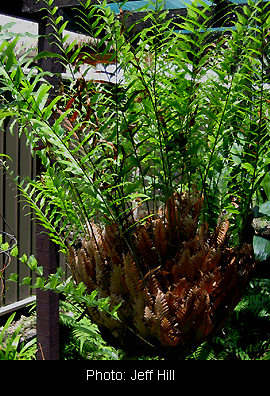 If you're lucky enough to find a specimen be prepared to pay dearly.
Small specimens of this plant have sold in the United States for prices as high as
$200!
If you're lucky enough to find a specimen be prepared to pay dearly.
Small specimens of this plant have sold in the United States for prices as high as
$200!
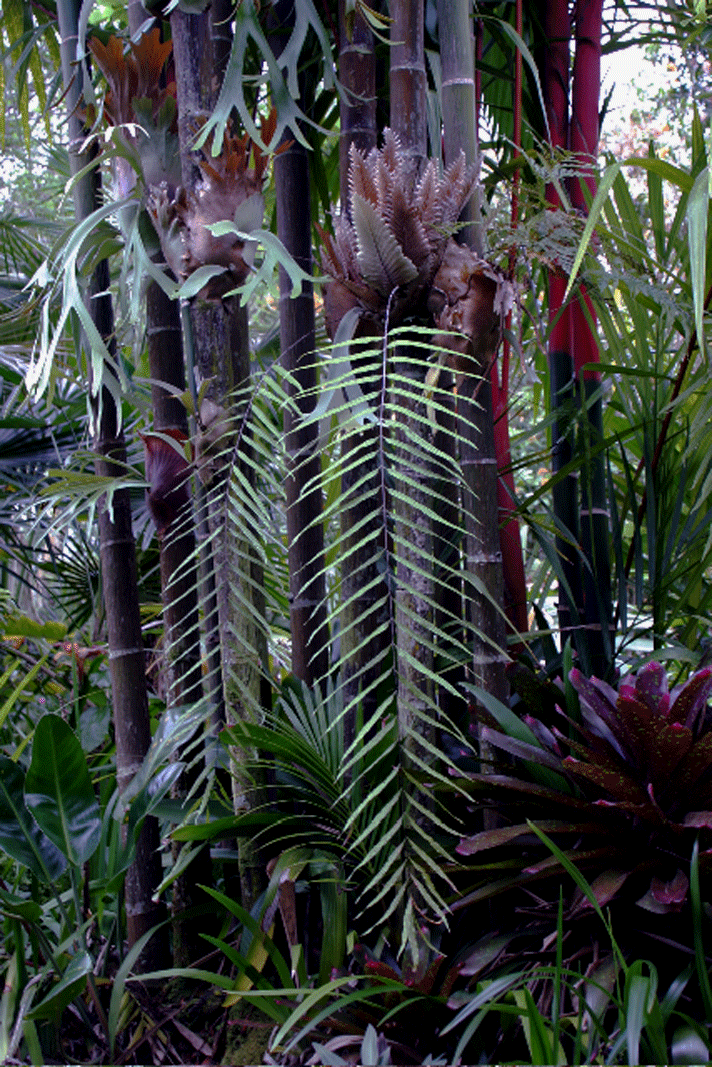
Photo above Copyright 2009, Leland Miyano